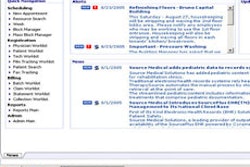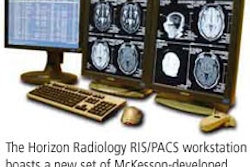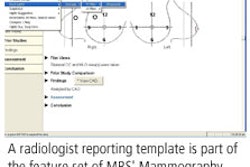Although the use of voice recognition (VR) applications in radiology can dramatically improve facility operations, it can negatively affect radiologists' perceptions of their job, which may carry over to the patient experience in the facility, according to a presentation at the Society for Computer Applications in Radiology (SCAR) meeting in Austin, TX, last month.
"Many radiologists object to using voice recognition; it's no secret that many radiologists have not wholeheartedly embraced the technology because of concerns about the cost of time in order to correct reports," said Dr. Mark Halsted, who presented the results of his group's research.
Halsted, from the department of radiology at Cincinnati Children's Hospital Medical Center in Ohio, measured the impact of enabling VR software in an integrated RIS/PACS system. He and his team looked at operational metrics, radiology staff satisfaction and stress, and patient satisfaction both before and after the introduction of VR technology in the department, which conducts about 180,000 exams annually through the main hospital and about 18 outpatient imaging clinics.
"We measured about 40,000 operations data points and metrics prior to and following each of the changes we made in our environment," Halsted said.
The group also conducted 500 outpatient surveys, live time-motion studies, and staff surveys in its assessment. Because the facility's primary focus is children, parents were surveyed and measured on their perceptions such as satisfaction with personal service, satisfaction with the service setting, and process satisfaction. The team conducted perception measurements with technologists and radiologists related to their work environment such as psychological stress, job satisfaction, perceived interruptions, and job empowerment.
Objective process-related metrics were obtained for exam reading time, transcription time, and radiologist sign-off time on reports for in-patient and out-patient nonstat studies, as well as out-patient and emergency department (ED) stat exams. In addition, the team measured reading room interruptions of radiologists in both frequency and duration.
The researchers reported that the outpatient parent perceptions were better prior to the implementation of VR than after its introduction. Radiologists and technologists showed slight differences, statistically insignificant, in their assessment of psychological stress, empowerment, and job satisfaction in the pre- and post-VR eras, with the pre-VR environment rating higher overall.
Radiologists surveyed significantly lower in their perceptions of quality and satisfaction, ease of use, and usefulness of the IT system after the introduction of VR. Technologists, however, did not report a significant change in their overall satisfaction with their perceptions of the IT system in the post-VR environment. The frequency of interruptions in the reading room decreased after the introduction of VR, but the duration increased, Halsted noted.
Operations are where VR demonstrated its strength. In the ED, the use of VR significantly reduced report reading, transcription, and sign-off throughput. In-patient and out-patient report throughput, utilizing the reading, transcription, and sign-off metrics, also showed strong gains, approximately 40%, in the post-VR environment.
"Your operations metrics in voice recognition, at least in our case, really declined significantly across the board," Halsted said.
By Jonathan S. Batchelor
AuntMinnie.com staff writer
May 17, 2006
Related Reading
Transcriptionist proofreaders ease transition to speech recognition, January 27, 2006
Cost-cutting drives European SR adoption, January 20, 2006
Speech recognition improves service to clinicians, June 5, 2005
Speech recognition drives more concise reporting, June 4, 2005
European studies show SR has multilingual muscle, March 4, 2005
Copyright © 2006 AuntMinnie.com



















